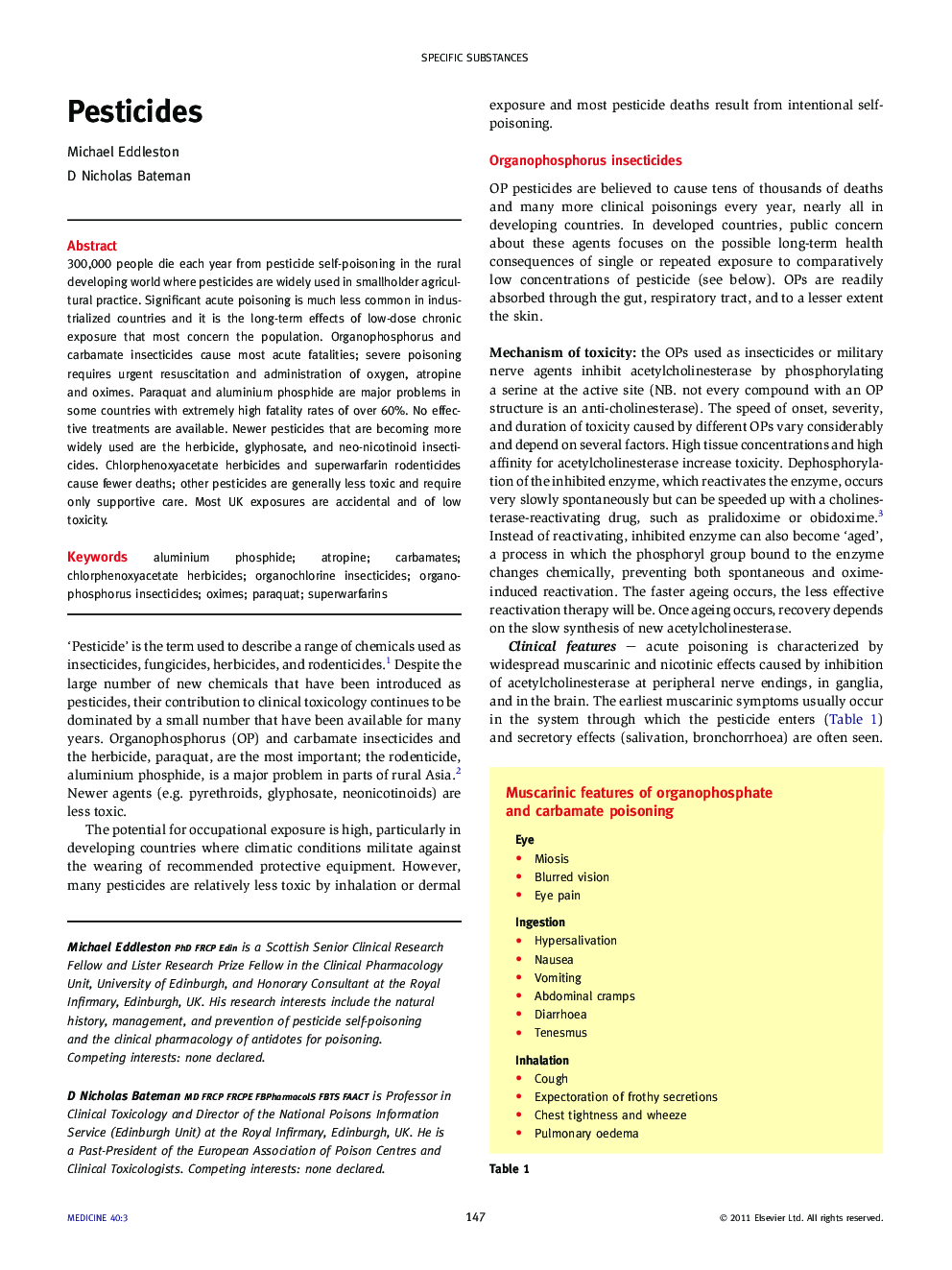| Article ID | Journal | Published Year | Pages | File Type |
|---|---|---|---|---|
| 3804917 | Medicine | 2012 | 4 Pages |
300,000 people die each year from pesticide self-poisoning in the rural developing world where pesticides are widely used in smallholder agricultural practice. Significant acute poisoning is much less common in industrialized countries and it is the long-term effects of low-dose chronic exposure that most concern the population. Organophosphorus and carbamate insecticides cause most acute fatalities; severe poisoning requires urgent resuscitation and administration of oxygen, atropine and oximes. Paraquat and aluminium phosphide are major problems in some countries with extremely high fatality rates of over 60%. No effective treatments are available. Newer pesticides that are becoming more widely used are the herbicide, glyphosate, and neo-nicotinoid insecticides. Chlorphenoxyacetate herbicides and superwarfarin rodenticides cause fewer deaths; other pesticides are generally less toxic and require only supportive care. Most UK exposures are accidental and of low toxicity.
